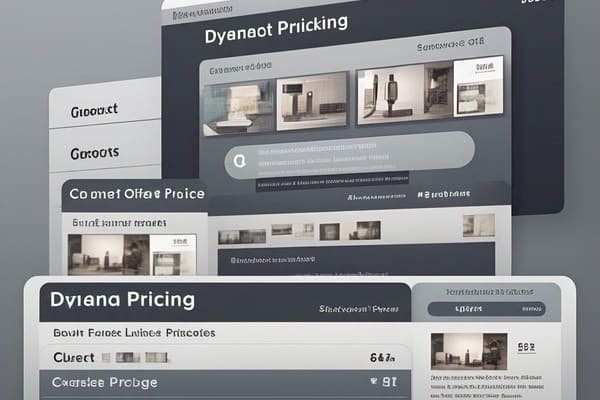Imagine adding an item to your cart online, only to see its price shift moments later. While this may seem surprising, it’s not a glitch — it’s dynamic pricing powered by AI. This cutting-edge strategy is transforming retail by enabling businesses to adjust prices in real time based on demand, competition, and customer behavior. According to a 2023 report by McKinsey, dynamic pricing strategies have helped some retailers boost their revenue by up to 10%.

Real-Time Data Analysis for Instant Pricing Adjustments
AI systems analyze vast amounts of data to make instant pricing decisions. These tools gather information on customer behavior, competitor pricing, supply chain conditions, and market trends. For instance, if a sudden spike in demand occurs for winter jackets during a cold snap, the AI system can automatically adjust prices to reflect this surge. This ensures businesses maximize profit margins while responding quickly to market conditions.
Personalized Pricing for Individual Customers
AI allows retailers to tailor prices based on individual customer profiles. By analyzing browsing habits, past purchases, and even location data, AI systems can suggest optimal pricing that aligns with each shopper’s willingness to pay. For example, a loyal customer who frequently buys electronics may see exclusive discounts, while first-time visitors might encounter promotional offers to encourage their purchase.
Predictive Analytics for Demand Forecasting
AI-driven predictive analytics empowers retailers to anticipate customer demand and adjust prices accordingly. By examining historical data and identifying purchasing patterns, AI can predict when demand will rise or fall. Retailers leveraging predictive pricing models can maintain competitive prices during peak seasons and proactively reduce prices to clear inventory during slower periods.
Competitor-Based Pricing Strategies
AI tools can continuously monitor competitors’ pricing strategies and automatically adjust prices to stay competitive. For example, if a rival retailer lowers prices on a popular product, AI systems can instantly match or undercut that price to retain customer interest. This automated process helps retailers remain agile in fast-changing markets without requiring constant manual oversight.

Dynamic Pricing in E-Commerce and Brick-and-Mortar Stores
While e-commerce businesses have been early adopters of dynamic pricing, brick-and-mortar stores are also adopting AI-driven strategies. Digital price tags linked to AI systems enable physical retailers to adjust prices in real time. Grocery stores, for instance, can reduce prices on perishable goods nearing their expiration date, reducing waste while maximizing sales.
AI-Enhanced Inventory Management
Dynamic pricing powered by AI goes beyond simple price adjustments; it also helps retailers manage inventory efficiently. If a particular item is overstocked, AI can gradually lower the price to accelerate sales. Conversely, limited stock items in high demand may see a strategic price increase. This smart inventory-pricing balance helps businesses maintain steady cash flow and reduce product losses.
Building Customer Trust Through Transparent Pricing
While dynamic pricing can improve profits, transparency is crucial to maintaining customer trust. Retailers adopting AI-driven pricing strategies are increasingly providing clear explanations for price changes. For example, travel platforms often disclose how demand patterns impact flight prices, fostering trust while allowing consumers to make informed decisions.
The Future of AI-Driven Pricing
As AI continues to advance, dynamic pricing will become even more precise and adaptive. Emerging technologies like reinforcement learning are enabling AI systems to refine pricing strategies by learning from past successes and failures. This evolution will empower retailers to deliver even more personalized and competitive pricing models, enhancing both customer satisfaction and revenue growth.
Retailers embracing AI-powered dynamic pricing are gaining a significant competitive edge in today’s fast-paced market. By leveraging data-driven insights, businesses can adapt in real time, meet customer expectations, and unlock new revenue opportunities.




